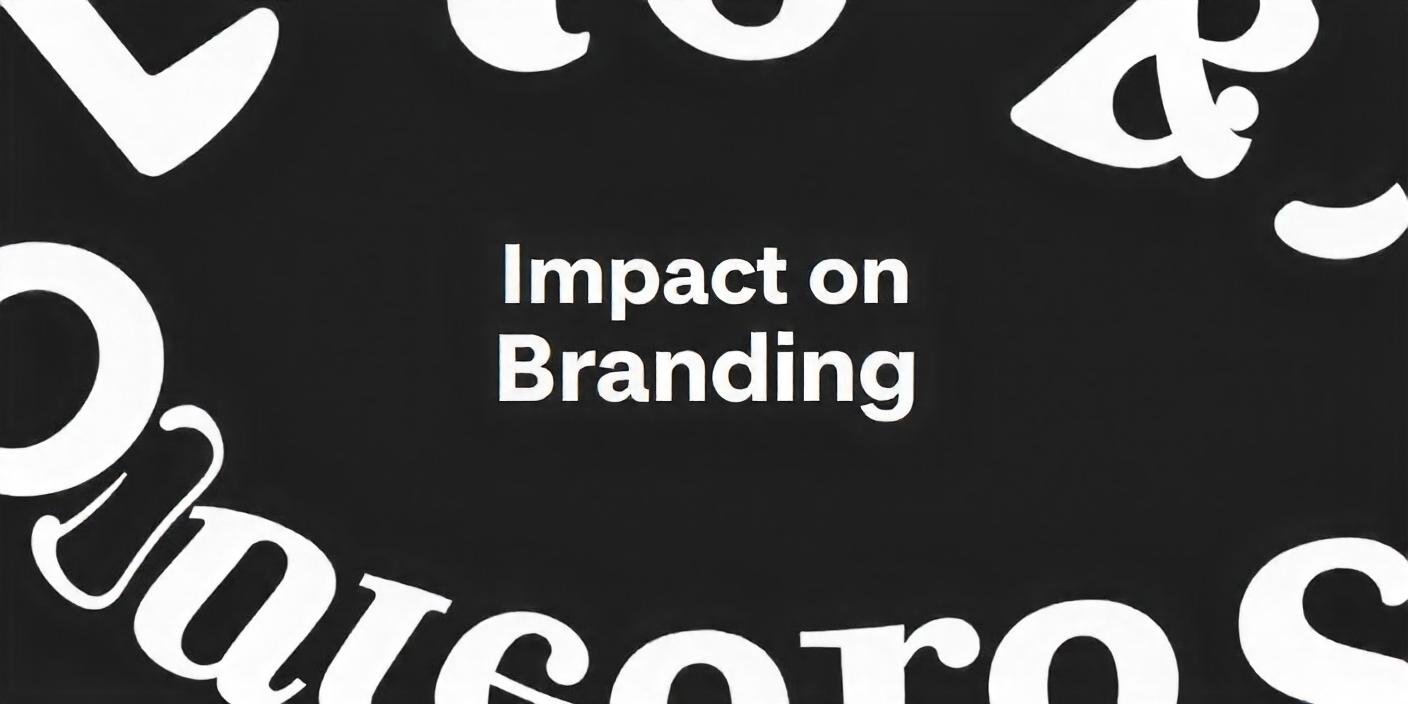Typography's Impact on Branding
Introduction
Typography is a critical component of visual communication and brand identity, transcending its role as mere text styling to become a powerful tool for conveying brand personality and values. In today's competitive marketplace, where brands vie for consumer attention across multiple channels, the strategic use of typography can significantly influence how a brand is perceived and remembered. Understanding the psychological underpinnings of typographical choices is essential for crafting compelling brand narratives and fostering meaningful consumer connections.
Problem Statement
Despite the acknowledged importance of visual elements in branding, there exists a notable gap in research regarding the specific impacts of typography on consumer perceptions and behaviors. While studies recognize typography's role in evoking emotions and establishing brand identity, empirical evidence linking typographical elements to measurable outcomes in consumer psychology and brand equity remains limited. Addressing this gap is crucial for informing effective brand communication strategies and optimizing marketing efforts.
Objective
This research seeks to fill the gap by investigating how typography influences consumer perceptions of brands. Specifically, it aims to identify which typographical elements (such as font style, size, and color) most significantly affect consumer attitudes towards brand personality traits such as trustworthiness, attractiveness, and credibility.
Significance
The significance of this research lies in its potential to provide marketers and designers with actionable insights into the strategic use of typography for enhancing brand perception and engagement. By uncovering the cognitive and emotional responses triggered by different typographical choices, this study can inform more effective brand communication strategies, leading to improved brand differentiation and consumer loyalty in competitive markets.
Literature Review
The literature review reveals a rich tapestry of insights into typography's role in branding. Scholars such as Ellen Lupton and Robert Bringhurst have underscored typography's ability to communicate brand values and evoke emotional responses effectively. However, empirical studies directly linking specific typographical attributes to consumer perceptions and behaviors are scarce. This review identifies a critical need for research that bridges theoretical insights with practical applications in branding contexts.
Methodology
To address this gap, the research employs a comprehensive mixed-methods approach. Qualitative methods include semiotic analysis of typographical elements in successful brand identities, examining how font choices align with brand narratives and target audience preferences. Quantitative methods involve experimental design, using surveys, focus groups, and eye-tracking studies to measure consumer responses to controlled typographical stimuli. The combination of qualitative depth and quantitative rigor ensures robust findings that capture both conscious and subconscious consumer reactions.
Results
Preliminary findings indicate that font styles perceived as modern and clean tend to enhance perceptions of brand sophistication and trustworthiness. In contrast, ornate or playful fonts may convey creativity but could detract from perceptions of professionalism. Statistical analyses reveal correlations between specific typographical attributes and consumer preferences across demographic segments, highlighting the nuanced effects of typography on brand perception.
Discussion
The discussion interprets the results within the context of existing literature, emphasizing the strategic implications for brand managers and designers. It underscores the importance of aligning typographical choices with brand identity and audience expectations to foster positive brand associations and emotional connections. By understanding how typography influences consumer perceptions, organizations can craft more cohesive brand narratives that resonate authentically with target audiences.
Challenges and Considerations
Challenges encountered during the research include ensuring methodological rigor in experimental design, managing participant biases in qualitative studies, and addressing ethical considerations related to data privacy and consent. These challenges underscore the importance of meticulous planning and adherence to ethical guidelines in conducting research that involves human participants and sensitive data.
Conclusion
In conclusion, the research illuminates the profound impact of typography on brand perception and consumer behavior. By strategically leveraging typographical elements, marketers and designers can enhance brand appeal, credibility, and memorability in competitive markets. Practical applications include developing tailored typographical guidelines for consistent brand messaging and exploring innovative approaches to integrate typography with emerging digital platforms.
Recommendations for Further Research
Future research avenues could explore longitudinal effects of typographical redesigns on brand equity, investigate cross-cultural variations in typographical preferences, and examine the role of interactive typography in enhancing consumer engagement. These studies would deepen our understanding of typography's evolving role in contemporary brand management and provide actionable insights for optimizing brand communication strategies.
References
1. Karahan, O. (2024, March 1). How color affects typography and brand perception (2024). 618Media: #1 Digital Marketing Agency. https://618media.com/en/blog/how-color-affects-typography-and-brand/#typographys-role-in-brand-communication
2. How Typography Shapes brand Perception: A Comprehensive analysis. (n.d.). https://www.cccreative.design/blogs/the-silent-impact-of-typography-on-brand-perception-an-in-depth-analysis#:~:text=The%20consumer%20perception%20of%20a,strengthening%20a%20brand%27s%20perceived%20quality.
3. Time for Designs. (2023, September 13). The Psychology of Fonts: How the choice of typography influences customer perception. https://www.timefordesigns.com/blog/2023/09/13/the-psychology-of-fonts-how-the-choice-of-typography-influences-customer-perception/

